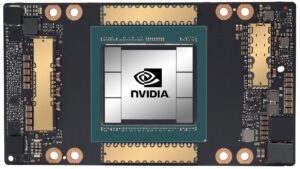Introduction
In the ever-evolving landscape of semiconductor manufacturing, the quest for higher performance, smaller form factors, and lower costs is relentless. Recently, Micron unveiled an exciting development that promises to reshape the industry’s approach to patterning certain DRAM layers: Nanoimprint Lithography (NIL).
This breakthrough technology is poised to address key challenges in patterning, offering unparalleled precision at a fraction of the cost compared to traditional methods.
Follow us on LinkedIn for everything around Semiconductors & AI
The Need for Innovation in DRAM Patterning
DRAM (Dynamic Random-Access Memory) is a cornerstone of modern computing, powering everything from smartphones to supercomputers.
As demand for faster and denser memory grows, manufacturers face increasingly complex challenges in patterning the intricate layers of DRAM devices.
One critical aspect is the fabrication of “chop” layers, which involve removing dummy structures from the periphery of dense memory arrays.
Traditionally, immersion lithography has been the go-to method for patterning these layers. However, as feature sizes shrink to meet the demands of next-generation DRAM nodes, immersion lithography faces limitations.
The shapes of the patterns become more intricate, pushing the boundaries of optical systems and increasing the likelihood of defects. Moreover, the stringent overlay requirements pose significant challenges for traditional lithography tools.
Read More: 5 Things to Know about High NA EUV Lithography; Revolutionizing Chip Manufacturing – techovedas
Enter Nanoimprint Lithography
Nanoimprint Lithography (NIL) presents a compelling alternative to traditional lithography techniques. Originally developed for nanotechnology applications, NIL has gained traction in semiconductor manufacturing due to its unique advantages:
- Unrivaled Resolution: NIL boasts resolution capabilities well beyond those of immersion lithography. By leveraging advanced nano-patterning techniques, NIL can achieve sub-nanometer precision, making it ideal for the intricate patterns required in DRAM chop layers.
- Freedom from Geometry Restrictions: Unlike optical lithography, which is limited by the physics of light diffraction, NIL imposes no inherent restrictions on pattern geometry or shape. This flexibility enables manufacturers to achieve the precise designs necessary for next-generation DRAM nodes.
- Relaxed Overlay Requirements: While overlay accuracy is paramount in many semiconductor processes, certain layers, such as DRAM chop layers, can tolerate higher levels of variation. NIL offers relaxed overlay performance compared to traditional lithography tools, reducing manufacturing complexity and cost.
- Cost-Effective Tooling: Perhaps most importantly, NIL represents a significantly lower-cost option compared to immersion lithography. With NIL tools potentially priced up to five times cheaper than traditional scanners, manufacturers can achieve substantial cost savings without compromising on performance or quality.
The Future of Semiconductor Manufacturing
Micron’s embrace of Nanoimprint Lithography marks a significant milestone in the integration of advanced patterning technologies into leading-edge semiconductor processes.
As the industry continues to push the boundaries of Moore’s Law, innovations like NIL will play a crucial role in enabling the development of smaller, faster, and more energy-efficient devices.
Beyond DRAM, NIL holds promise for a wide range of semiconductor applications, from logic and memory to MEMS and photonics.
As researchers refine NIL techniques and overcome remaining challenges, we can expect to see its adoption expand across the semiconductor ecosystem, driving further advancements in technology and paving the way for the next generation of computing devices.
Read More: What are the Various Types of Semiconductor Packaging
Conclusion
In conclusion, Nanoimprint Lithography represents a game-changing innovation in semiconductor manufacturing, offering unmatched precision, flexibility, and cost-effectiveness.
As companies like Micron lead the charge in implementing NIL for critical DRAM layers, the industry stands poised for a new era of innovation and growth. With NIL at the forefront, the future of semiconductor manufacturing has never looked brighter.





Where did Micron announce this?
SPIE.